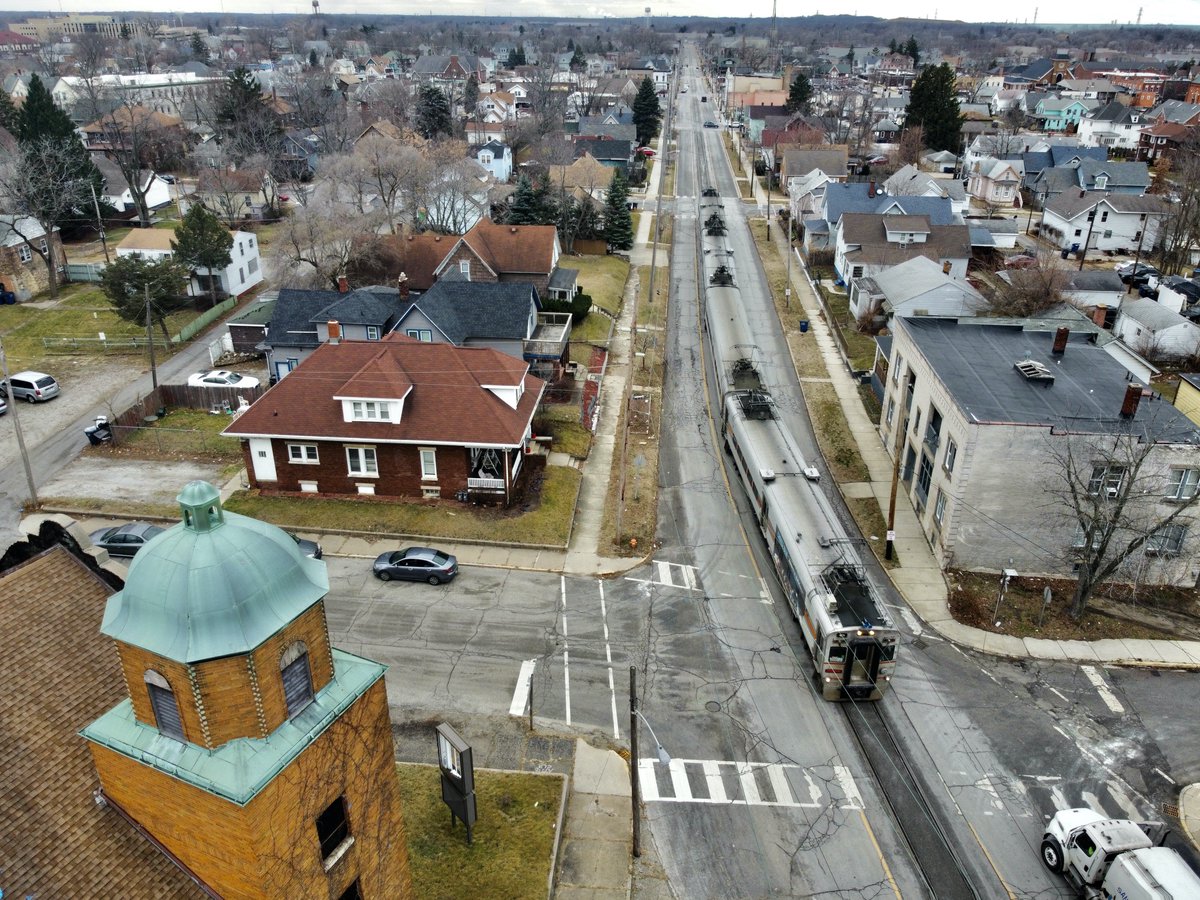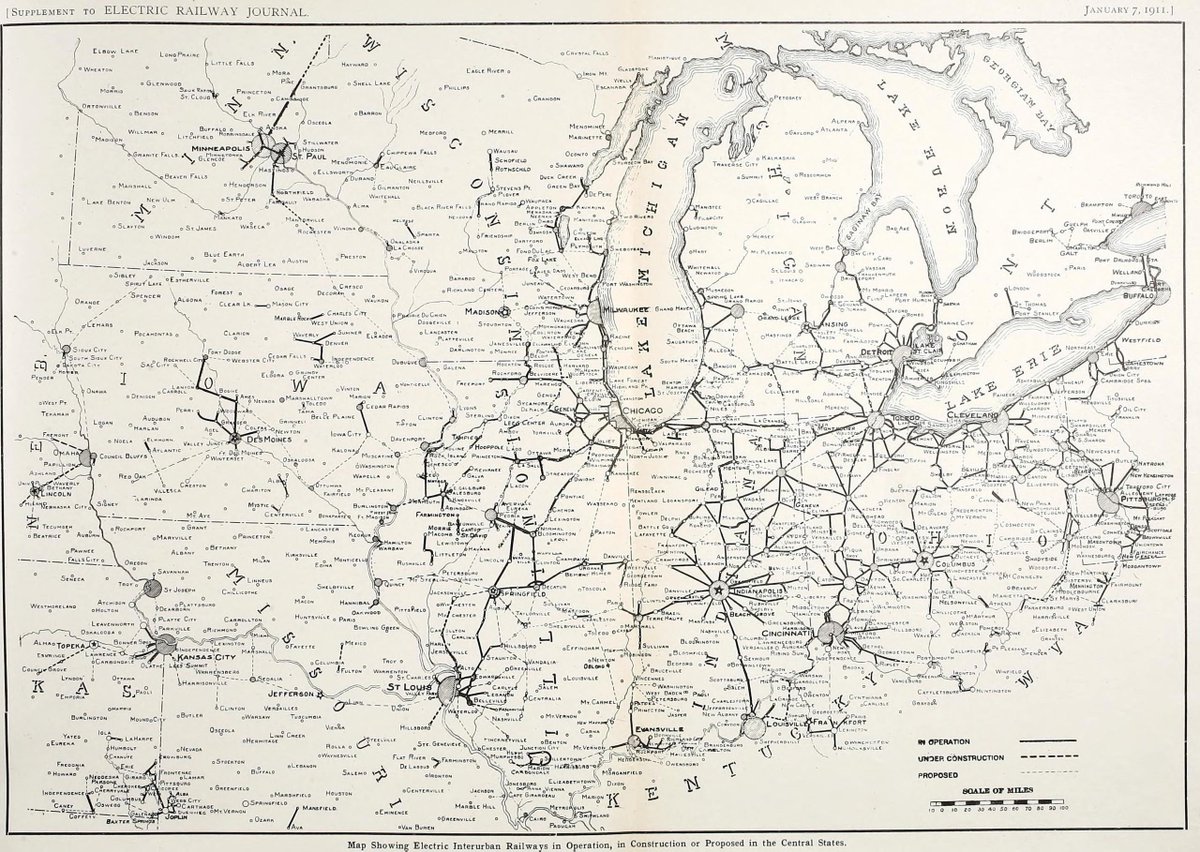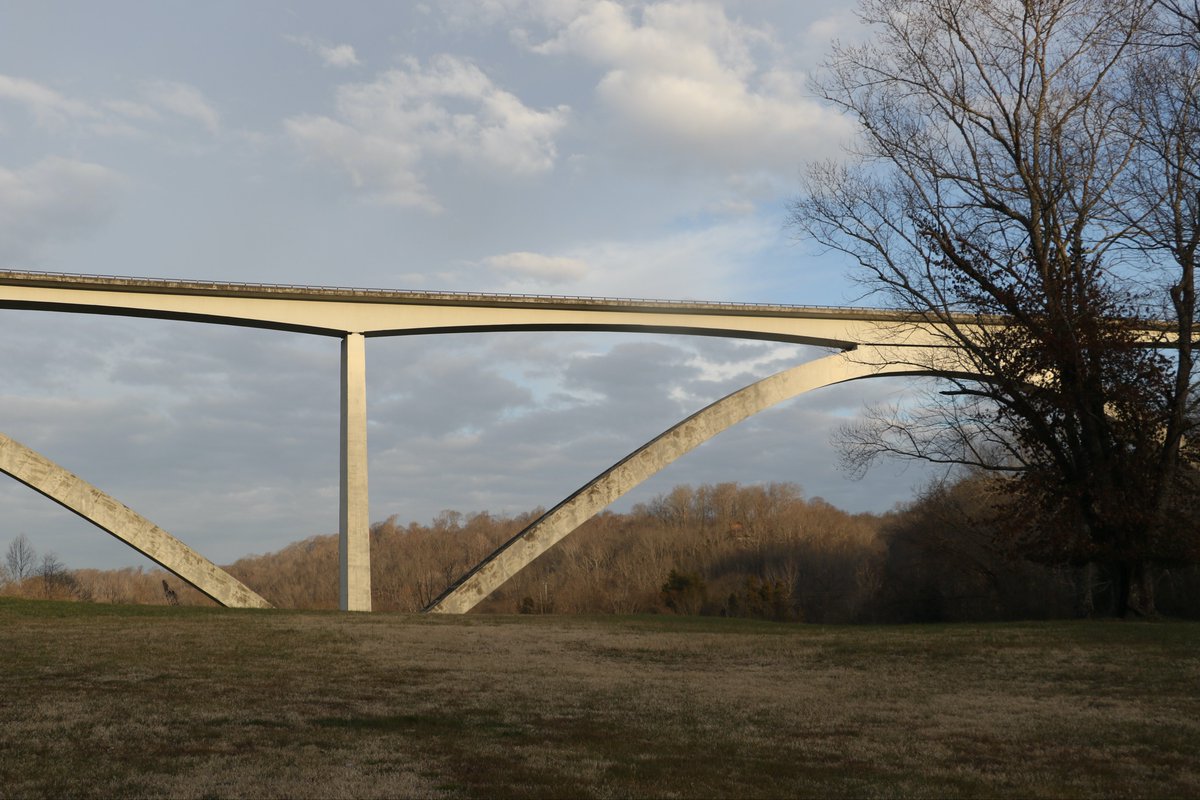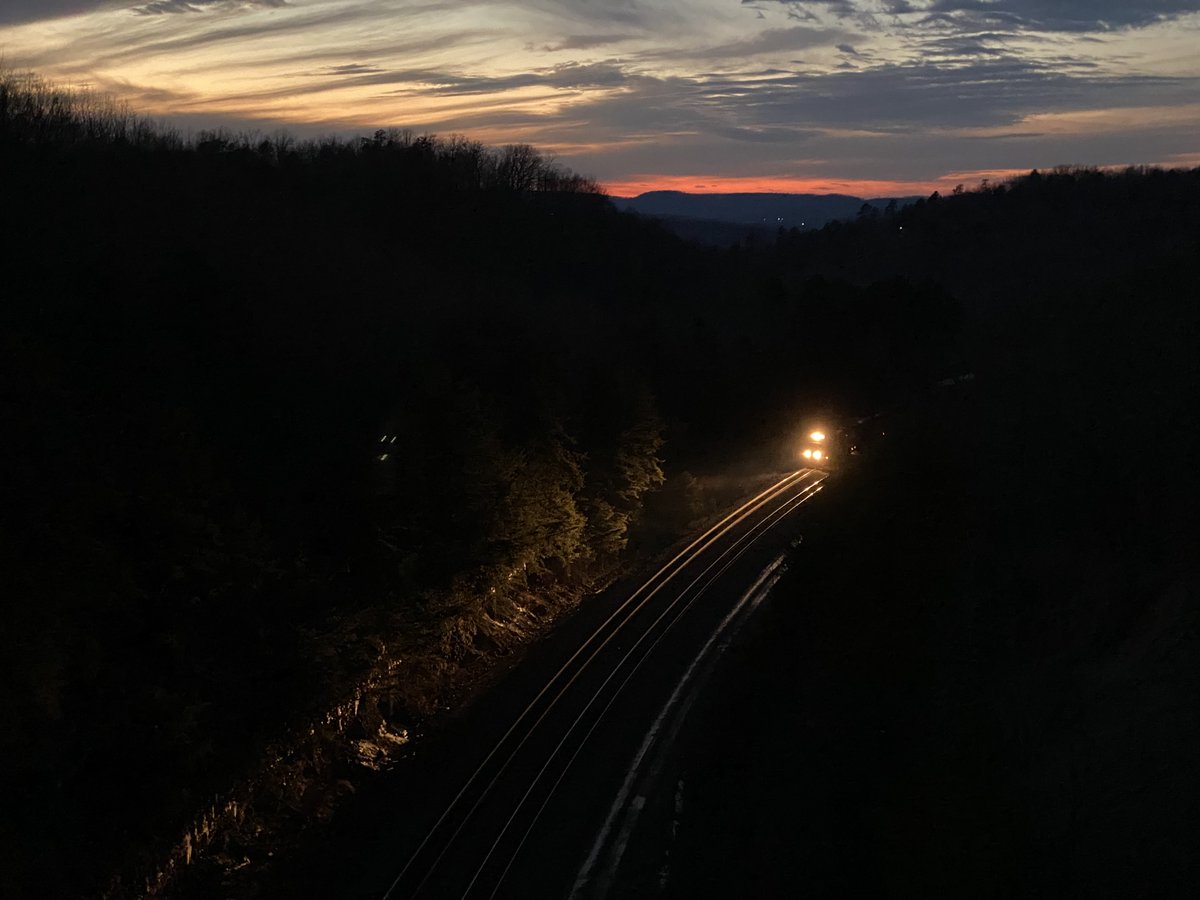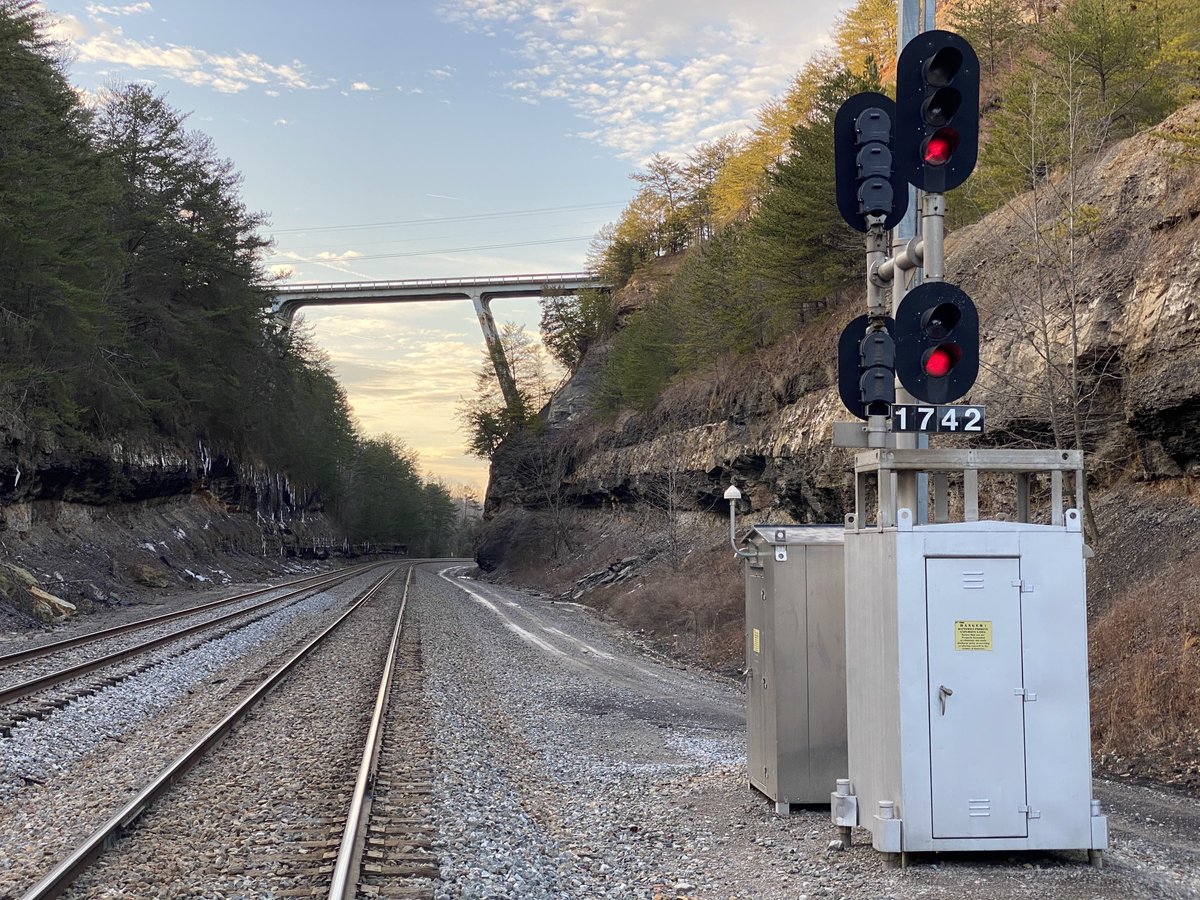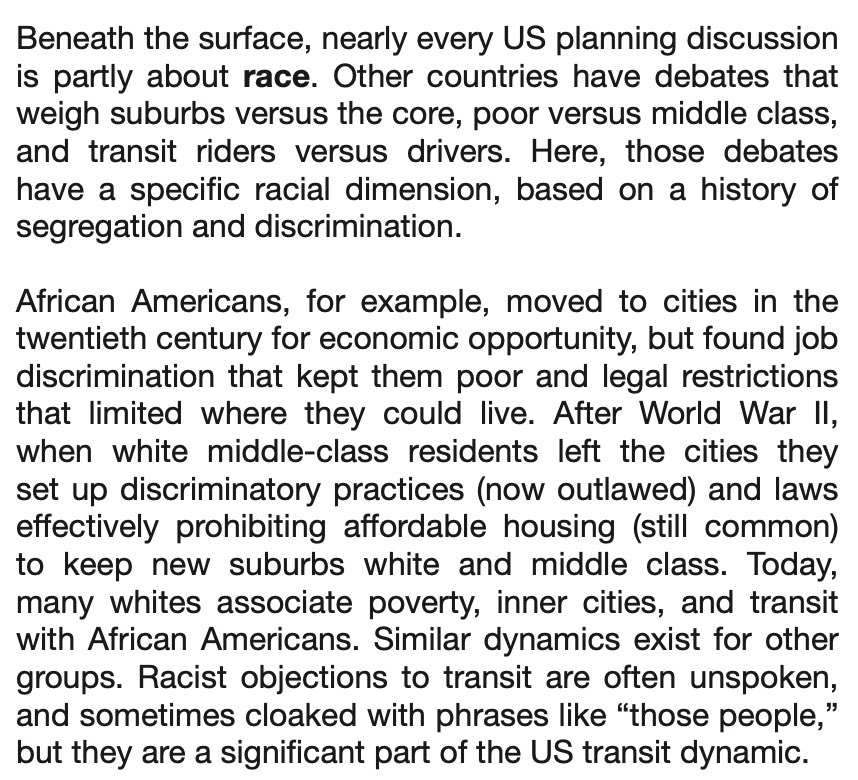
The southeast corner of Downtown Fort Worth. I-30 and the former Texas & Pacific (now UP) run left to right. I-35W, the former ATSF (now BNSF), the former SP (now UP), and the former MKT (now UP) cross them. 

This the Texas & Pacific station, with its 1931 tower, now end of the line for Trinity Railway Express commuter trains (you can see one departing) to Dallas and TEXRail trains to DFW airport. The commuter rail tracks are alongside, but not connected to, the freight tracks. 
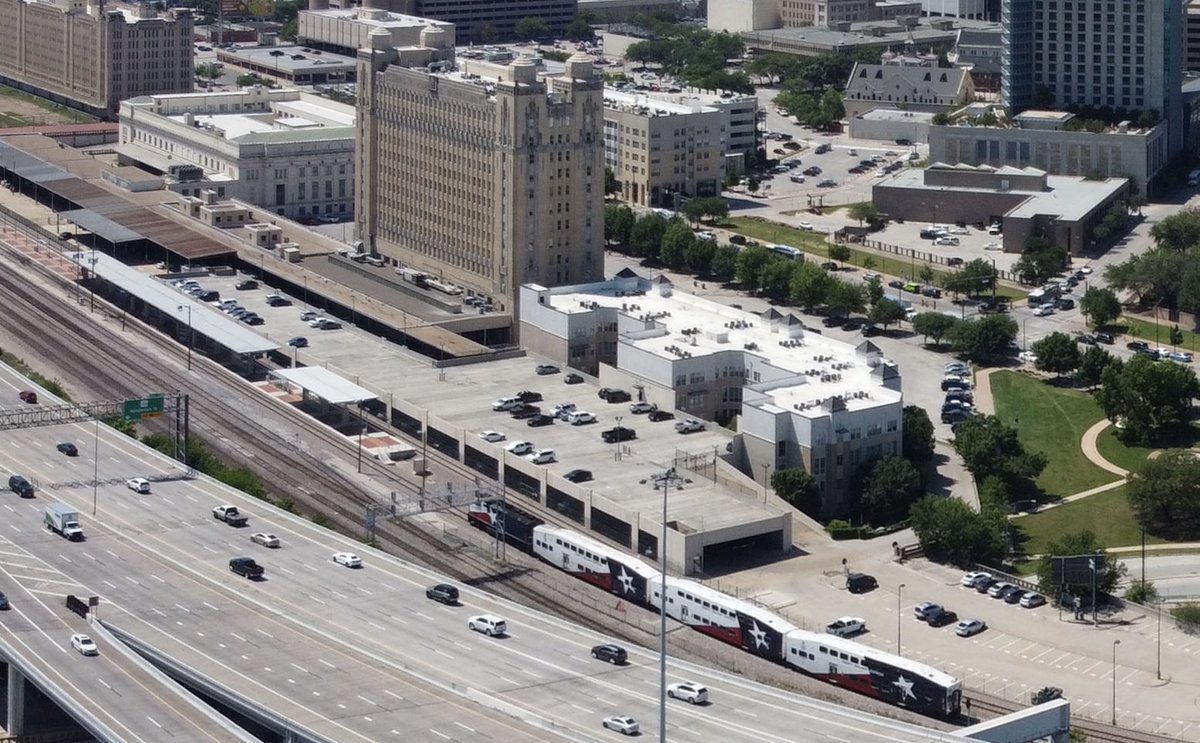
This is Fort Worth Central Station, where TRE and TEXRail connect to Trinity Metro buses. North of here the commuter trains dive under BNSF and UP, keeping them separated from the busiest freight lines. Amtrak stops here, too — that’s the Heartland Flyer on its midday layover. 

This is Tower 55, which handles about 100 trains a day. That's an at-grade crossing -- while something like this BNSF coal train is moving north-south, nothing can move east-west. up.com/cs/groups/publ… 

Both the rail and freeway junctions were recently rebuilt; I-30 and the interchange were completely replaced in 1993-2003 (including moving the freeway from in front of the T&P to behind it) and the rail junction was upgraded with additional tracks and new signals in 2013-2014. 

• • •
Missing some Tweet in this thread? You can try to
force a refresh




